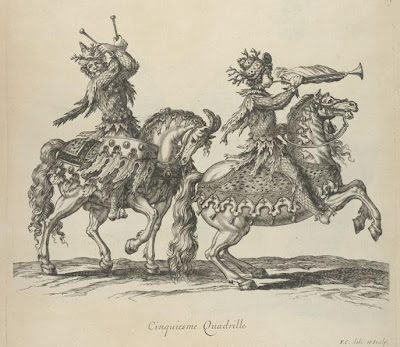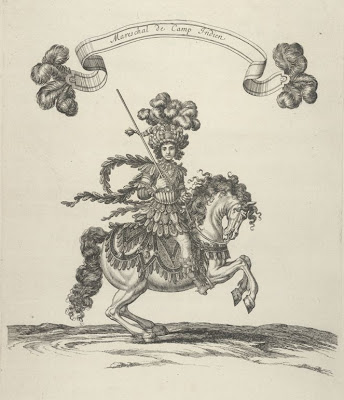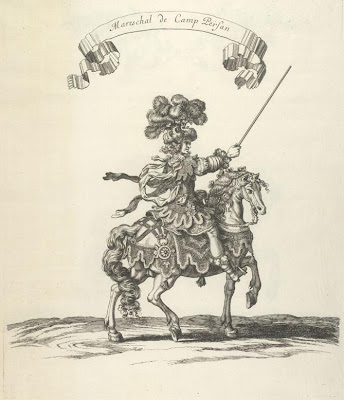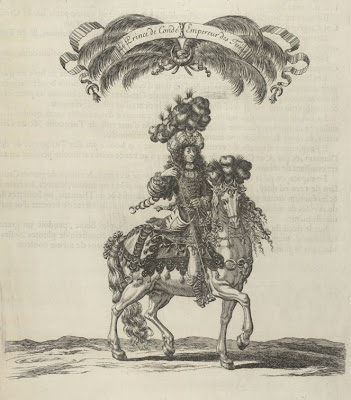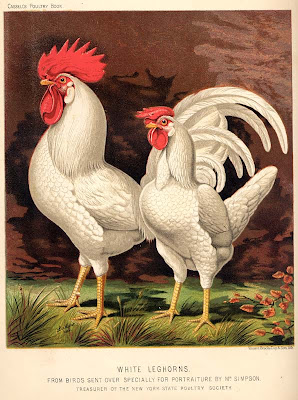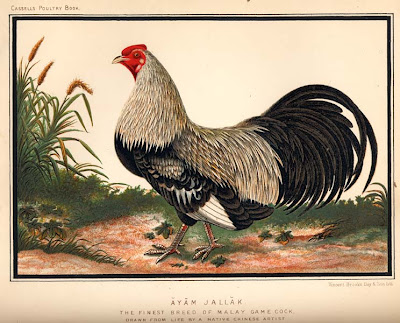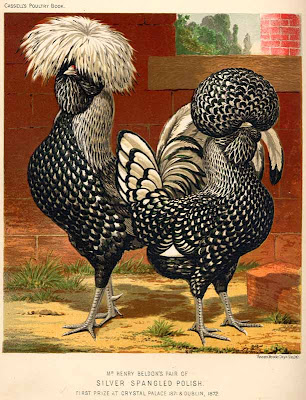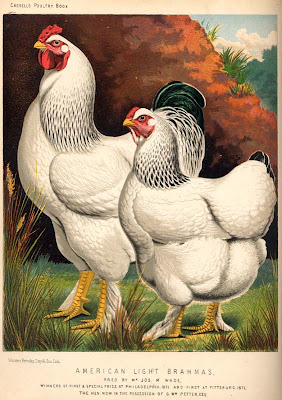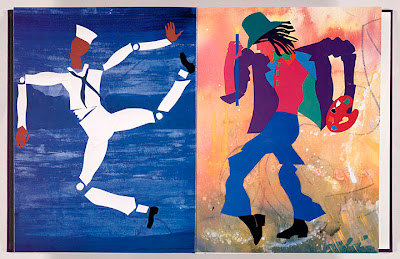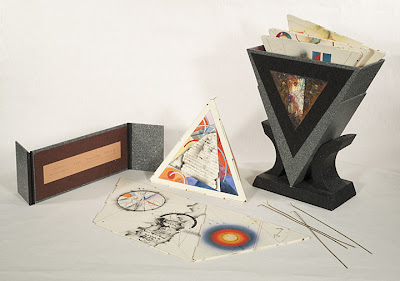




This is a slight but worthwhile repeat of sorts. Aztec sunstones discovered in Mexico in 1790 were described by Antonio de León y Gama in 'Descripción Histórica y Cronológica de las dos Piedras..' [An historical and chronological description of two stones found under ground, in the great square of the City of Mexico]. Since I last posted (more info) a couple of images, the Library of Congress have digitized the whole book.

Frontpiece 'Syntagma Anatomicum' by Johannes Vesling, first published in 1647 - That array of instruments above their heads would be sure to inspire confidence in a surgeon's office. [from Kyushu University, Japan - an overlooked image from a previous post]
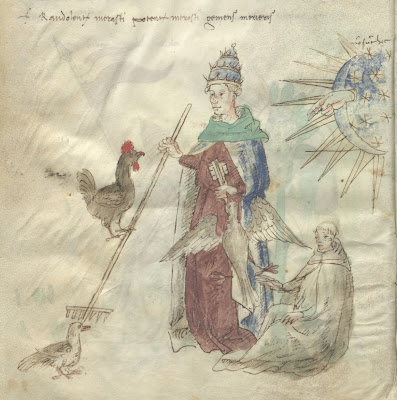


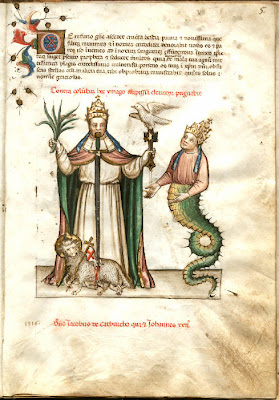

The first 2 images above are from the the 'Papstprophetien' manuscript (~1464-1471) and the other 3 are from 'Vaticinia Pontificum' from earlier in the 15th century. By any other description, these are the 'Pope books' with figurative (mostly) illustrations of about 30 popes. These manuscripts are linked to a degree - there are at least a couple of images that are copied between them. The top images come from the German National Museum digital collection (click 'index') [inadvertently via Armchair Aquarium] and the other set are from Stiftsbibliothek Kremsmünster in Austria.

Speaking of rediscovered historical documents ... I went sifting through the caverns below the momentarily silent but venerable nonist institution and stumbled upon a cache of wonderful original works: Archeography © Jaime Morrison.

'The Bull Fight' by H.Cook. 19th century.

'The Great Mosque & the Alcazar or Dungeon of the Inquisition,
Córdova on the Guadalquiver', engraved by T. Higham, 1844.

'Torre de la Infantas, Alhambra'
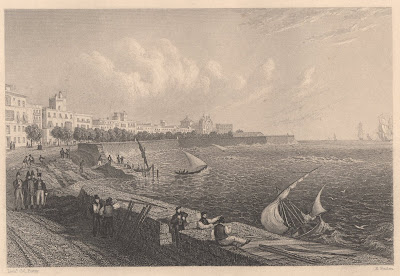
Cadiz

'Córdova - carcel de la Inquisicion' by Antonio Roca Sallent, 19th century.

'Les Gitanos. Faubourg de Triana à Séville'
from a book by Emile Rouargue, 19th century.
The above images come from Biblioteca Virtual de Andalucía - somewhere among the Gráfica tab in 'Secciones' I think - or thereabouts.
 'La Grande Religion des Trois Diffusions'
'La Grande Religion des Trois Diffusions' - Indochine, 1930s from
the Ulysses database at Le Centre des Archives d’outre-mer (Archives nationales, Aix-en-Provence) [via
Agence Eureka]



All images © François Houtin
It comes as no surprise to learn that Parisian etcher, draughtsman and printmaker, François Houtin started out his working life as a gardener. See:
Richard Reed Armstrong Gallery and
Galleria del Leone. [Via the eclectic
Ullabenulla]

Geological survey of Ashby, Nebraska, 1955.
This comes from Kansas University Insight Browser
collections but I can't refind it at the moment. I have 'insight.ku.edu' saved in the image title so it seems reasonably certain.

 Saab Memorial Medical Library at the American University of Beirut: Instructional Posters 1930s and '40s
Saab Memorial Medical Library at the American University of Beirut: Instructional Posters 1930s and '40s.
{Geological and anatomical surveys seem like kindred spirits.}
'Perfectorium' at Marienburg Castle.

'Korridor vor dem Kapitel Saal' (Marienburg Castle).

Marienburg Castle scenes -
'Schloss Marienburg in Preussen', 1799 by Friederich Gilly, in the
architectural section of the German National Museum digital collection.

'Le Plaisir des Fous' {The Pleasure of ?Madmen/?Idiots} engraved
by Pierre-François Basan, 18th century. Alchemy satire.

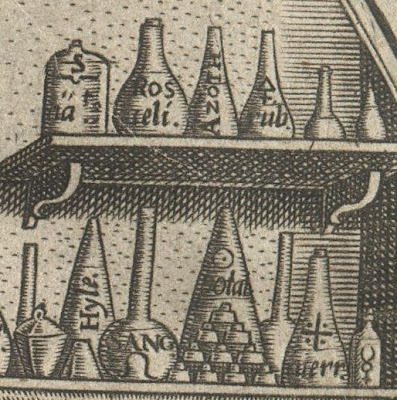
The image (and detail) above are from Heinrich Khunrath's
'Amphitheatrum sapientiae aeternae', first published in 1609 - "infused with a strange combination of Christianity and magic [..and a] tension between spirituality and experiment". I've posted the colour illustrations previously (see
Wisconsin University Library) but had not seen the primary engraving in a book format. The Khunrath and alchemy satire prints both come from
University of Pennsylvania's Schoenberg Center for Text and Images [SCETI] which I'm surprised to note I've never referenced previously. It is worth poking about. They have enormous images available.

IN: 'Ornamental architecture in the Gothic, Chinese, and modern taste
: being above fifty intire new designs of plans, sections, elevations, &c.'
by Charles Over, architect, 1758. [
NYPL]
 'Album de Mostres Abadal Tartar'
'Album de Mostres Abadal Tartar' [I can see the date 1664 and I suspect the text is italian or perhaps just latin. The image was found somewhere in
Biblioteca Virtuale de Miguel Cervantes.
Can someone please enlighten me - is this a satire on the Tatar people of Eastern Europe or is there a mythological creature 'Tartaro'? I have a vague feeling I've seen or even posted a lubock folk print of a similar figure before.]
Not toooo far off:
Tartarus: "While almost all the dead were said to go to hades, the gods cast the very worst mortal sinners and immortal enemies into tartarus for endless punishment."
Thanks Jack!


A series of illuminated letters that were (I think) included in a 19th century work (?songbook) from València,
'Àlbum factici amb caplletres ornamentades' by Estanislau Sacristán - online at Biblioteca Virtuale de Miguel Cervantes (click
'Leer' for thumbnail pages).
There has been slight background cleaning of a few images. Click to enlarge.




